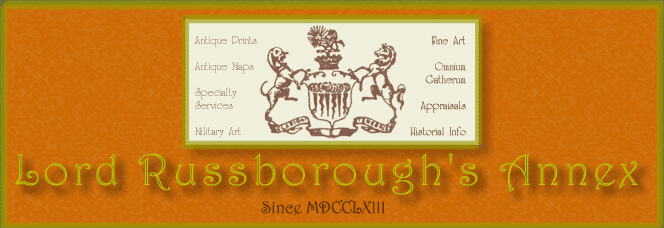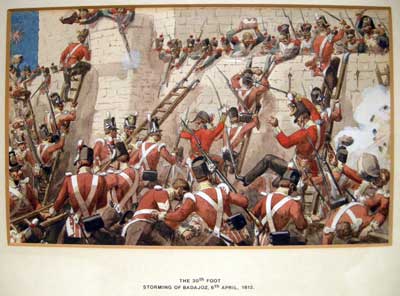-ful.jpg)
SCOUTS
10th. Lt. Dragoons in the Peninsula, after William Barnes Wollen, 1905.
Chromolithograph Published E.S & A. Robinson Ltd. Bristol. Non-glare glazing, Set into heavy gilt-wood and gesso frame.
Image size 29 1/2 x 22" (74.9 x 55.9 cm.) Frame 36 x 28 1/2".
Ref. CB9 (186)/ALN/ a.anan >VNN SOLD PRICE CODE C
10th Light Dragoons, later to become ‘The Royal Hussars’ – was an elite British cavalry regiment under the command of Lord Paget, that played a significant role during the winter retreat to Corunna (1808-9) and other engagements during the Peninsular war. Here, Wollen has depicted the sensitively captured moment when two of their number spot five mounted enemy emerging from the trees on the opposite side of the ravine. The horses stop in their fresh snow tracks, behind two large trees, hooves poised (note the bloodied bandage on the right front hock of the lead horse) and ears pricked forward. The silence is palpable as the sergeant hand signals his companion to halt. Wollen exhibited the original painting at the Royal Academy London 1905.
William Barnes WOLLEN, Born Leipzig, Germany 1857; died London 1936. Along with Woodville and Hillingford, Wollen may be regarded as one of the most prolific illustrators and artists of battle pictures of the late Victorian/early Edwardian era.
With the end of the Boer war, Wollen returned to painting retrospective battle/campaign pictures such as Scouts (The Royal Hussars) showing a patrol of the 10th Light Dragoons in the Peninsula, Wollen was also an active illustrator and painter in water-colours, exhibiting many pictures at the various London exhibitions.
Provenance: Parker Gallery London 1975
Private collection Mississauga 1975- 2020



-ful.jpg)
